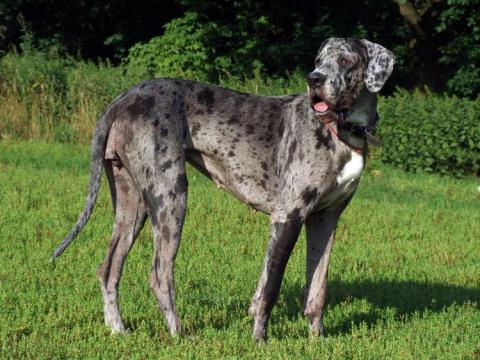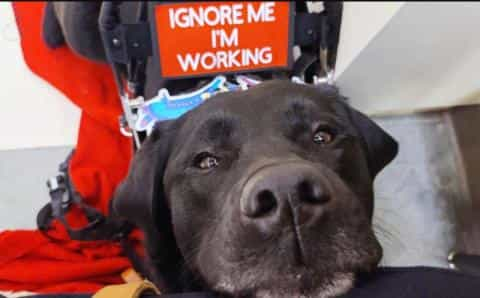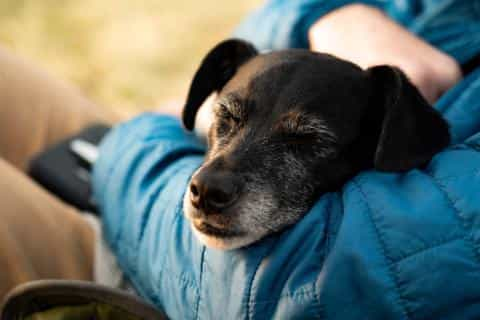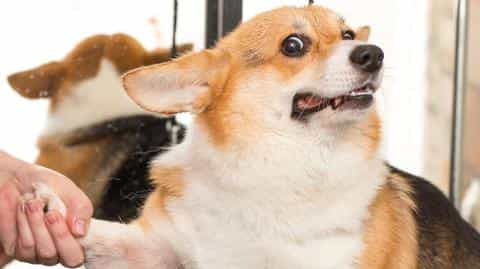
Published on September 16 by Ramona
In a heart-wrenching and challenging episode, Cesar Millan, renowned dog behaviorist, faces one of his most difficult cases yet involving Junior, a Great Dane with a tumultuous past and a complicated present. Junior, a rescue dog with a history of trauma, presents a dual narrative of both a family’s savior and a formidable challenge due to his aggressive tendencies.
Junior’s story begins with a tragic chapter in his early life. As a rescue puppy, Junior suffered severe abuse when he was run over by his owners and abandoned. This horrifying experience left him physically and emotionally scarred, instilling deep mistrust and fear. The trauma from this incident has significantly influenced his behavior, resulting in aggression and heightened defensiveness.
Despite his aggression, Junior plays a crucial role in his current family. He is particularly significant to the family’s son, who suffers from severe panic attacks. In these moments of distress, Junior provides much-needed comfort and stability. The bond between the boy and Junior highlights the dog’s potential for positive impact, demonstrating his capacity to provide emotional support and alleviate stress.
However, Junior’s aggressive tendencies pose a serious risk. His past trauma manifests in aggressive behavior, which can be dangerous to others. His defensive nature, while understandable given his history, creates a challenging environment for both the family and anyone who interacts with him. This aggression often stems from a deep-seated mistrust and fear, making it crucial to address these behavioral issues with sensitivity and care.

In addressing Junior’s aggressive behavior, Cesar Millan brings his expertise to the forefront. Known for his work with challenging dogs, Millan’s approach involves several key strategies:
**1. Building Trust: Millan focuses on rebuilding trust with Junior. Understanding that the aggression is rooted in fear and trauma, he works on creating a sense of safety and stability for Junior. This involves gentle, consistent interactions to help Junior feel secure.
**2. Establishing Leadership: One of Millan’s core principles is establishing clear leadership. By demonstrating calm, assertive leadership, Millan aims to help Junior understand his place within the family structure, reducing the need for defensive aggression.
**3. Behavioral Modification: Millan employs behavioral modification techniques to address Junior’s aggressive tendencies. This includes positive reinforcement for desired behaviors and redirecting aggression in a controlled manner. The goal is to help Junior learn more appropriate responses and gradually diminish his aggressive reactions.
**4. Support for the Family: Millan also works closely with the family to ensure they are equipped to manage Junior’s behavior. This includes providing guidance on how to interact with Junior in a way that supports his behavioral improvement and ensures the safety of everyone involved.
The case of Junior is a complex one, intertwining a history of trauma with the present challenges of aggression. Millan’s work with Junior is a testament to the difficult yet rewarding nature of dog rehabilitation. Success in this case hinges on patience, empathy, and a comprehensive approach to behavioral modification.
As Millan continues to work with Junior, the focus will be on gradually helping him overcome his fears and trust issues while ensuring the safety and well-being of both the dog and the family. The journey is likely to be long and challenging, but with Millan’s expertise and the family’s commitment, there is hope for Junior to achieve a more balanced and harmonious life.
Junior’s case highlights the profound impact that past trauma can have on a dog’s behavior and the significant challenges it poses in the realm of dog rehabilitation. Cesar Millan’s approach offers a structured path toward addressing these issues, emphasizing the importance of trust, leadership, and consistent behavioral management. For Junior, the journey to overcoming his aggressive tendencies is ongoing, but with dedicated effort, there is potential for healing and a better future for this troubled yet loving Great Dane.
Discover More Content





